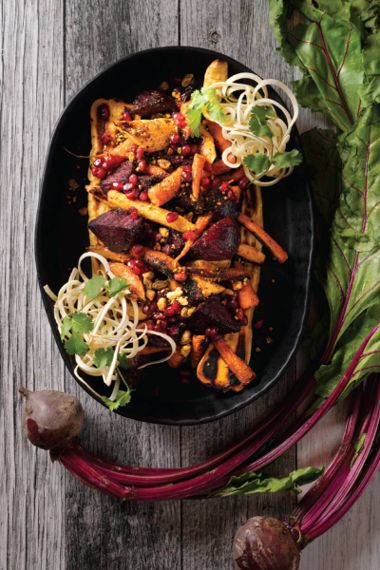Colour Your Heart Healthy with These Antioxidant-Rich Red Foods
Red is a colour commonly associated with passion and love, but red foods may have a direct effect on our heart health. Mother Nature made good use of her red paint brush, packing red foods with both flavour and colour.
The same pigments that give red foods their colour, called anthocyanins, are also responsible for a host of health benefits, including reduction of inflammation in the body, and have been shown to help with heart health, playing a role in better cholesterol and triglyceride profiles.
Certain red foods, such as tomatoes, contain lycopene, an antioxidant that helps prevent damage to cells from oxidation and has been shown to have a role in reducing cardiovascular risk factors including high blood pressure and metabolic syndrome.
Red foods such as cherries and cranberries are packed with free radical-fighting vitamin C, which helps protect cells from damage and also helps our body form blood vessels, cartilage, muscle, and collagen in bones. The colour red may actually have a more direct effect on our hearts by increasing our heart rates when we simply perceive the colour. Read on for red recipes sure to lift your appetite and make your heart happy.

Vitamin C-rich piquillo peppers do double duty in this dish. Their triangular shape makes them perfect for stuffing with a tasty tuna filling, and they also make for a scrumptious sauce when paired with hazelnuts and garlic. A small amount of honey helps to balance out the smoky flavour. When paired with a salad, this dish easily serves two as a main meal, but it will stretch to a few more as part of a tapas-style meal.

Cooked tomatoes are an excellent source of the powerful antioxidant lycopene. This simple yet luxurious dish is based on a dish from the south of Spain, similar to a North African shakshuka. The recipe draws on Spanish paprika and roasted red pepper for its smoky flavour. It’s a satisfying meal, equally at home on the dinner table as on the breakfast bar.

This dish feels fancy but is a cinch to put together. A sweet sauce of frozen cherries with a splash of heart-healthy red wine brings a touch of luxury to a simply cooked lean pork tenderloin. Cherries, packed with vitamin C and polyphenols, have been shown to have effects on heart health, including reduced oxidative stress, inflammation, and blood pressure levels.

This moist plant-based cake, featuring flavours of orange and thyme, is punctuated by tart cranberries. Cranberries have long been known as a superfood with many health benefits, but in recent research cranberries have demonstrated an association with lower blood pressure, better cholesterol profiles, and with the management of other cardiovascular risk factors such as a high body mass index (BMI).
Heart-healthy herbs
Herbs and spices have been used as remedies for thousands of years. Here are some that evidence suggests may have beneficial effects for cardiovascular health.
Cayenne
Like paprika, hot and spicy cayenne contains capsaicin, which reduces inflammation, believed to be a factor in plaque buildup in blood vessels.
Cinnamon
This popular spice is high in inflammation-combatting antioxidants. Research involving people with type 2 diabetes found cinnamon to be associated with a reduction in cholesterol levels.
Coriander
The plant Coriandrum sativum produces the seeds we know as coriander, and the leaf which we refer to as cilantro. Both may benefit heart health and are associated with helping to lower cholesterol.
Garlic
If the flavour of this essential cooking staple isn’t gift enough, studies have shown that garlic may help lower blood pressure.






